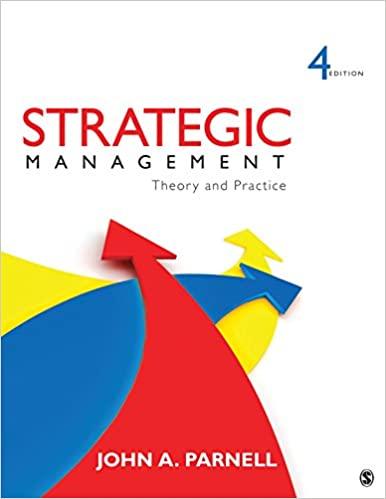Sam Walton began his career in retailing as a J. C. Penney management trainee. He later leased
Question:
Sam Walton began his career in retailing as a J. C. Penney management trainee. He later leased a five-and-dime store in the rural community of Newport, Arkansas, in 1945. Five years later, he launched Walton 5 & 10, and by 1962, Walton owned 15 Ben Franklin stores under the Walton name. Walton envisioned a rapid expansion of chain discount stores in small towns, a concept rejected by Ben Franklin. As a result, Sam and his brother James “Bud” Walton opened the first Wal-Mart Discount City in 1962. Wal-Mart Stores reached 18 stores with sales of $44 million in 1970, and the company went public.
The company continued to avoid the competition by opening stores in small and midsized towns. The company amassed 276 of its own stores with annual sales in excess of $1 billion by 1980. Three years later, the first Sam’s Wholesale Club was opened, touting a cashand-
carry, membership-only warehouse format. Rapid growth continued through the 1980s and 1990s.
Today, the Bentonville, Arkansas-based firm operates more than 10,000 stores—over half outside the United States—including traditional discount stores, “supercenters” that also sell groceries, and Sam’s Wholesale Clubs, as well as some Internet sales. Wal-Mart has locations in all 50 states and is the leading retailer in Canada and Mexico (through its Wal-Mart de México division). Wal-Mart also operates stores in Germany, Korea, Japan, and China, as well as other nations in Asia, Europe, and South America. The heirs of the late Sam Walton (Wal-Mart’s founder) own about 38% of the company.
It is almost impossible to separate Wal-Mart from its founder. The flamboyant leader was known for his charismatic style, emphasis on customer service, and high esteem for Wal-
Mart employees. More than anything, however, Walton instilled a bias for action in managers and associates alike. Store change is constant as opportunities for improvement were constantly being sought. Within each store, department managers act as entrepreneurs and are encouraged to innovate. CEO David Glass continued Walton’s commitment to cost control, innovation, greater emphasis on the upscale market, and a customer-centered culture until the top job was handed to Lee Scott in 2000. Following an incessant stream of criticism alleging such practices as unfair price competition and employment discrimination, Scott launched a concerted effort in late 2004 to defend Wal-Mart’s record, both as a successful retailer and as a good corporate citizen. Wal-Mart is under constant pressure from environmental groups and organized labor, and defends itself against the most lawsuits of any firm in the United States.
Wal-Mart has continued to expand in the early 2010s, including an emphasis on smaller, neighborhood stores that carry both grocery and household items. Major appliances such as flatscreen televisions were added in the late 2000s. Wal-Mart acquired a 51% stake in South African firm Massmart in 2011, giving the firm access to sub-Saharan Africa.
Case Challenges
1. Is it easy to become enamored with a company when it has enjoyed so much success over the years? What are Wal-Mart’s weaknesses?
2. Does Wal-Mart’s new neighborhood store format run counter to the cost-cutting emphasis that is at least partially responsible for the success of its traditional stores? Explain.
3. What challenges can Wal-Mart expect with its international expansion efforts?
Step by Step Answer:






